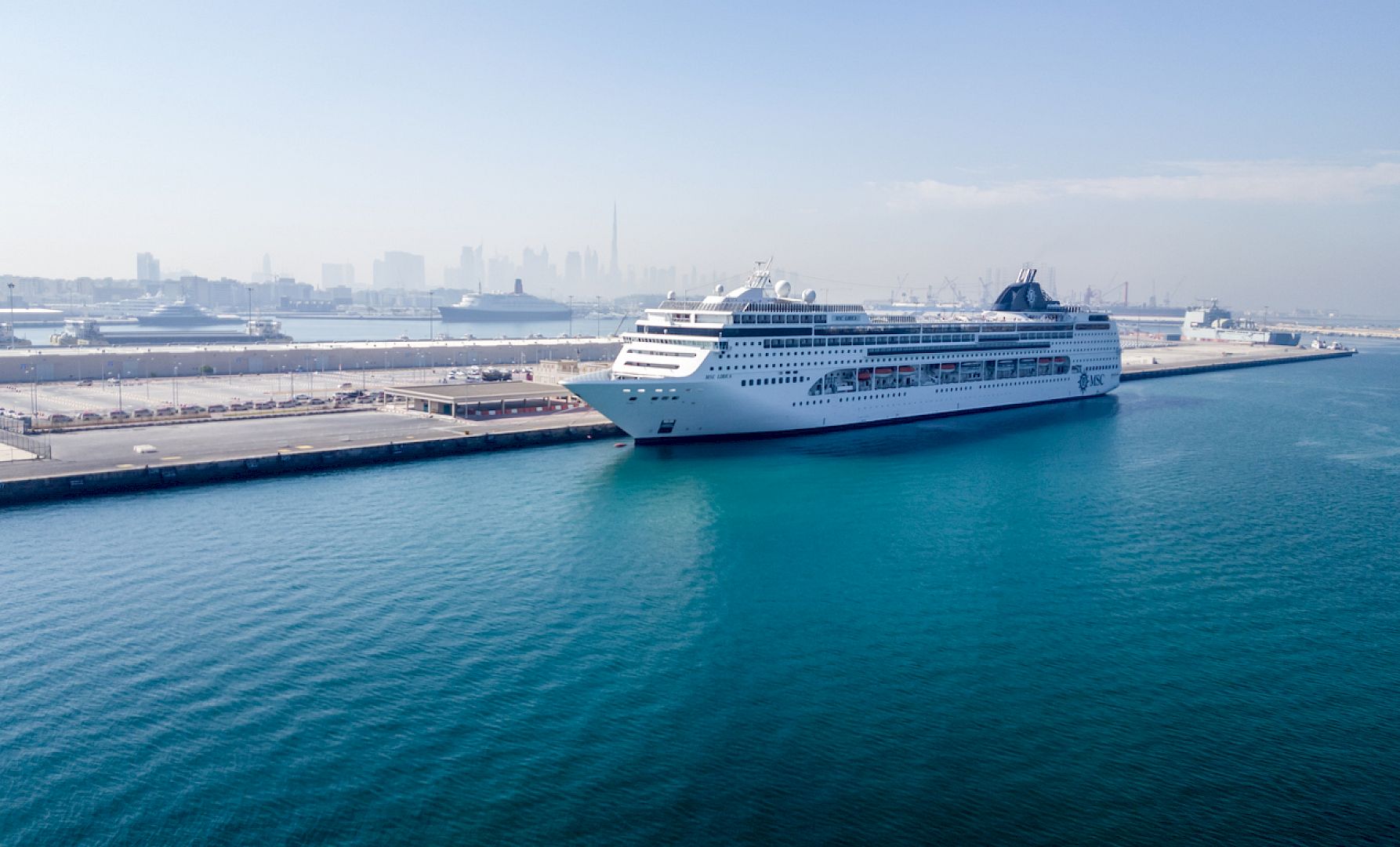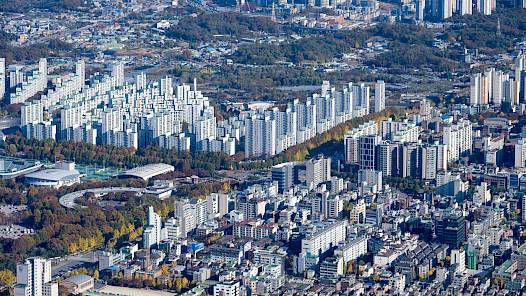Understanding the potential in Saudi Arabia's growing cruise market
13 September 2024 — Saudi Arabia’s cruise sector is booming under Vision 2030, opening lucrative opportunities for global cruise operators, shipbuilders, and cruise passengers across the value chain. Discover what is driving this growth.

Download this post (PDF)
In the wake of Vision 2030 and Saudi Arabia's significant economic diversification endeavors, large investments have been poured into marine infrastructure and projects generally, and cruise industry specifically. While attention is often drawn to Saudi investments in areas like sports, smart cities, and entertainment, the ambitious cruise industry initiatives remain relatively obscure.
In the cruise market, the Arab region has often been overlooked and underestimated. However, recent developments, especially in Saudi Arabia, are driving a significant transformation as the country takes monumental steps to build the industry from the ground up.
This article examines Saudi Arabia's initiatives in the cruise sector, alongside the large investments in marine infrastructure under Vision 2030. The aim is to highlight the emerging opportunities for international players looking to engage with this growing market and illuminate the dynamic evolution of Saudi Arabia's cruise industry and its broader implications for global players in the value chain.
Setting sail: Navigating the currents of Saudi Arabia's emerging cruise industry
Aligned with Saudi Arabia's Vision 2030 and its push for economic diversification, the tourism industry is set to play an important role in this plan. The goal as stated in the Vision 2030 impact publication is for tourism to contribute 10% to the country's GDP by 2030 [1]. That represents a notable increase from its current 4.5%, and a significant rise from the 3.6% GDP contribution in 2019 when the kingdom first began its tourism development efforts [2].
Another goal as stated in Vision 2030 is for Saudi Arabia to welcome 100 million visitors annually by 2030 [1]. However, by the end of 2023, this ambitious target was recalibrated to 150 million, driven by the impressive achievement of surpassing the initial goal seven years ahead of schedule. In 2023 alone, the kingdom recorded over 104 million visitors according to the Saudi Ministry of Tourism, a record-breaking figure [3].
However, a closer look reveals an interesting detail: 79 million of these visitors were Saudis, nearly reaching the national target of 80 million domestic visitors by 2030. This trend aligns with the government's strategy to reduce outbound tourism and keep spending within the domestic economy. It also highlights the appeal of Saudi Arabia's evolving landscape, which is drawing locals with new experiences as the nation undergoes its transformation.
Regarding international visitors, and according to the UN World Tourism Organization, Saudi Arabia ranked third globally in tourism growth in 2023, compared to pre-pandemic levels—an increase of 11 million visitors over 2022—although it started from a lower base than some of its competitors [2]. Despite this success, there is still a huge gap between reality and the ambition, which is to attract 70 million international visitors by 2030—from 25 million in 2023, emphasizing the ongoing challenge and opportunity to further enhance the nation's global appeal and hospitality infrastructure.
Specifically addressing the cruise industry, the Ministry of Tourism, alongside Cruise Saudi, aims to attract 1.3 million cruise passengers by 2035, positioning Saudi Arabia as a premier hub and route for international cruise lines [4]. Moreover, plans are underway to have 10 operational ports with necessary infrastructure by 2030 [3]. To bolster its appeal, Saudi Arabia is investing 800 BUSD in the tourism sector over the next decade, leveraging ambitious projects like NEOM and Sindalah and its six UNESCO World Heritage sites, largely unseen by tourists—27 BUSD were already invested in tourism in 2023 according to the Saudi Ministry of Tourism [5].
According to Cruise Saudi, the kingdom hosted over 170 thousand visitors from 120 different nationalities in 2023, accommodating a total of 65 trips for 16 vessels operated by 11 different companies [5]. These included tours organized by MSC Cruises, and Norwegian Cruise Line along with 13 new visits from operators like Swan Hellenic, TUI Cruises, and Fred. Olsen [2]. Additionally, Saudi Arabia has completed the refurbishment and expansion of three key ports—Jeddah Islamic Port, Yanbu Commercial Port, and King Abdulaziz Port—with ongoing work at three more: Jazan Port, Duba Port, and Alwajh Port, covering both the Red Sea and Arabian Gulf coasts [9].
Three UNESCO World Heritage sites are now accessible by sea, including AlAhsa Oasis, the Hegra Archaeological Site in AlUla, and Historic Jeddah, the Gateway to Makkah. Further development projects are underway to position Saudi Arabia as an attractive travel destination. With approximately 250 million people in Europe, Asia, and Africa living within a three-hour flight of the Red Sea and Arabian Peninsula, the potential cruise market is immense.
Saudi Arabia's development of its maritime infrastructure is driving the growth of its cruise industry. The expansion of key ports and the development of new facilities, including private beaches and islands, are central to the kingdom's strategy to attract more cruise tourists. Recent visa reforms, such as the introduction of e-visas and visa-on-arrival facilities now available to citizens of 63 countries, further support this goal by improving accessibility and enhancing the overall cruise experience [3]. Remarkably, before 2019, Saudi Arabia had no tourism visa at all. These initiatives point to a promising future for the kingdom's cruise industry.
Leading the way: Cruise Saudi and AROYA's role in Saudi Arabia's cruise expansion
In recent years, Saudi Arabia has embarked on a transformative journey to establish itself as a key player in the global cruise industry. Leading this effort is Cruise Saudi, a wholly owned subsidiary of the Public Investment Fund, which has been central in shaping the kingdom's cruise sector since its inception in 2021. Cruise Saudi has played a pivotal role in expanding homeport capabilities across the country, enhancing Saudi Arabia's appeal as a premier cruise destination.
The company has spearheaded the development of essential cruise infrastructure at Jeddah Islamic Port, Yanbu Commercial Port on the Red Sea, and King Abdulaziz Port in Dammam on the Arabian Gulf [9]. These ports are now fully equipped to accommodate the largest cruise ships. Through strategic development and management of cruise berths and terminals, Cruise Saudi has positioned itself as a key partner for international companies looking to invest in this emerging market.
A key milestone in Cruise Saudi's journey is the launch of AROYA Cruises in June 2023. According to their official website, AROYA is designed to offer tailored experiences for Saudi and GCC (Gulf Cooperation Council) nationals, and residents, providing an authentic immersion into Arab culture. The cruise line’s flagship vessel, The AROYA, previously known as World Dream, originally built in 2017 as the flagship of Dream Cruises, has undergone extensive refurbishment to cater to its new audience [11].
AROYA's planned routes focus on the Arabian Gulf and the Red Sea, connecting key cities in Saudi Arabia, Jordan, and Egypt, with future ambitions to expand into the Mediterranean. The vessel will be operational starting from December this year and will sail from Jeddah, on the Red Sea, to Aqaba, in Jordan, and Sharm el Sheikh and Ain Sokhna, in Egypt [8]. AROYA, which is the only vessel in the fleet for now, will operate cruises in the Red Sea before transitioning to the Eastern Mediterranean in June 2025, homeporting at Galataport Istanbul. By winter 2025, the ship will sail the Arabian Gulf, with Dammam, Saudi Arabia, as its homeport.
After the MedCruise conference in June 2024, the PR firm representing AROYA stated that the number of AROYA future ships has not been confirmed, and while there are plans for additional vessels for the brand, exact numbers and timelines are yet to be confirmed [4].
Saudi Arabia’s evolving cruise sector presents significant opportunities for global cruise operators, shipbuilders, and tourists
While Saudi Arabia's Vision 2030 sets ambitious targets, skepticism persists around initiatives led by the government or government-owned entities. Concerns linger over the application of free market principles, with fears of political interference and instability. The concentration of power within the monarchy raises valid questions about accountability and transparency in decision-making processes.
Yet, amidst these uncertainties, signs point to Saudi Arabia's dedication to its objectives and global image enhancement. The political landscape, despite its challenges, offers distinct advantages for such monumental and costly endeavors. Characterized by centralized decision-making, the top-down approach expedites large-scale projects and facilitates swift policy implementation—a pivotal driver for ambitious endeavors. Moreover, the abundance of resources and the kingdom's capacity to absorb interim setbacks further bolster the nation's ability to pursue its goals.
On the other hand, Saudi Arabia is making significant strides to enhance its international reputation and global image. Beyond the reforms on women's rights and the broader social opening, the kingdom is set to host the Asian Winter Games in 2029 at a planned mountain resort in the Neom development, and it is also bidding to host the football World Cup in 2034. These high-profile events highlight Saudi Arabia's commitment to improving its global image.
Given these developments, international players—including global cruise operators, shipbuilders, and cruise passengers—find themselves at the forefront of a landscape rich with opportunity across the value chain.
For cruise operators, there is a growing niche market that can be tapped into by emphasizing Arab culture in entertainment, dining options, and décor. AROYA Cruises, for example, leverages this opportunity by providing a unique experience tailored specifically for the Arab and Muslim market. By not offering alcohol or casinos, yet maintaining a luxurious, family-friendly atmosphere, AROYA avoids direct competition with global operators. This allows international players to target the local market while appealing to a different audience in the region.
As the demand for luxury cruise experiences rises in Saudi Arabia, particularly for culturally immersive journeys, global operators should stay alert. Saudi consumers are showing an increasing interest in high-end cruise offerings that explore new destinations while providing authentic local experiences. The leisure travel trend among Saudis continues to rise, with 45% of domestic trips in the first half of 2023 being for leisure, a steady increase from previous years. Moreover, local travelers' booking expenditures grew by 10.8% last year, and 75% of consumers opted for local destinations, according to data from Almosafer [3]. This trend in leisure spending is expected to persist into 2024, with more than 16 million people attending entertainment events hosted by the Entertainment Authority in Q2 2024, a 130% increase from the same period in 2023 according to AlArabiya Business [1]. For international visitors, the leisure tourism sector is also growing, with 20% of travelers visiting Saudi Arabia for leisure in 2023, up from 15% in 2022 and 9% in 2021[3]. This creates an opportunity for global cruise operators to design packages tailored to Saudi and GCC nationals, as well as international tourists interested in exploring new routes, which could extend beyond Saudi Arabia to familiar destinations like Jordan, Egypt, and other Mediterranean countries.
Some global operators have already begun incorporating Saudi Arabian cities such as Jeddah and Dammam into their Arabian Gulf itineraries, alongside popular destinations like Dubai, Abu Dhabi, and Doha. This includes operators such as MSC Cruises, Costa Cruises, and AIDA, further highlighting the growing interest in Saudi Arabia as a cruise destination [2].
Meanwhile, for shipbuilders, AROYA's recent 330 MUSD investment in acquiring a semi-used ship reflects Saudi Arabia's cautious yet forward-thinking approach to cruise ventures. While this move signals a nascent entry into cruising for the GCC resident demographic, it also hints at significant future potential, potentially leading to further vessel purchases. Although the number of AROYA's future ships has not been confirmed yet, it was clearly communicated through the PR firm representing AROYA that there are plans for additional vessels for the brand [4]. This presents a potential opportunity for shipyards, as Saudi Arabia focuses on downstream development, European shipbuilders remain well-positioned to construct new vessels tailored to this emerging market.
Finally, from the perspective of cruise passengers, Saudi Arabia remains a relatively untapped tourism destination with distinctive experiences. Reviews from cruise passengers on platforms such as Cruise Critic and social media have been generally positive, often highlighting the warmth and hospitality of the people, along with the distinctive attractions the country offers [12]. Projects such as NEOM, Sindalah, and the six UNESCO World Heritage sites—many of which remain largely unexplored by tourists—add to the appeal. In 2023 alone, 79 million Saudis explored their own country and culture with renewed interest, while the rising influx of international tourists underscores Saudi Arabia’s increasing allure. Looking ahead, the government’s planned 800 BUSD investment in the tourism sector over the next decade promises to bring even more attractions for local and international visitors alike.
Positioning for success in Saudi Arabia's cruise sector: Key regulatory and cultural factors
Positioning for success in Saudi Arabia's cruise sector requires a deep understanding of several key factors that international players must consider as they look to enter this emerging market.
First, understanding the regulatory environment is critical. With ongoing changes in regulations, it is important for international players to stay informed and adaptable, especially as certain aspects of the legal framework remain in flux. Keeping abreast of these developments will be crucial to ensuring compliance and successful entry into the market.
Second, cultural sensitivities must be recognized and respected. Tailoring offerings and marketing strategies to align with the unique preferences of both Saudi and GCC nationals, as well as international tourists, will be vital for long-term success. Ensuring that cultural nuances are carefully considered can help to build trust and enhance the appeal of services in this market.
Finally, adopting a long-term perspective is essential. Investing in sustainable relationships and infrastructure will enable international players to effectively capitalize on the growth potential of Saudi Arabia’s cruise industry. In this dynamic environment, early entrants stand to gain a competitive advantage by taking a proactive approach. Establishing a presence early provides the opportunity to build and nurture strong personal connections, a key element of success in Saudi business culture.
By focusing on these key factors—regulatory awareness, cultural alignment, and long-term investment—international players can position themselves for success in the Saudi cruise market and set the foundation for sustained growth.
Conclusion
In conclusion, Saudi Arabia's developing cruise industry presents an important opportunity for both domestic and international stakeholders. While initial reservations about government-led initiatives and concerns over political influence remain, the kingdom's commitment to its Vision 2030 goals and enhancing its global reputation is clear.
Amidst the growing demand for luxury and culturally immersive experiences, particularly in the Middle East, cruise operators, European shipyards, and passengers are well-positioned to benefit from this expanding market. As Saudi Arabia's tourism landscape continues to evolve, driven by shifting consumer preferences, the cruise sector is poised for significant growth, offering a compelling opportunity for global players to engage in this emerging market.
The scale of Vision 2030's initiatives demands attention, presenting great opportunities for growth and development. While a cautious approach is advisable, the potential benefits of involvement in this market are too significant to ignore.
References:
[1] Saudi Arabia Vision 2030 impact (2024) retrieved at https://www.vision2030.gov.sa/en/ on 09 May 2024
[2] Economist (2024) retrieved at Can Saudi Arabia become a premier tourist hotspot? (economist.com) on 31 July 2024
[3] Saudi Ministry of Tourism (2024) retrieved at https://mt.gov.sa/ on 09 May 2024
[4] Cruise Saudi (2024) retrieved at https://www.cruisesaudi.com/ on 09 May 2024
[5] Aawsat (2024) press release, retrieved at «كروز السعودية» تعمل على فتح بوابات بحرية جديدة للعالم (aawsat.com) on 31 July 2024
[6] CruiseBooking.com (2024) retrieved at https://www.cruisebooking.com/articles/middle-east/top-cruise-lines-go-to-saudi-arabia on 12 August 2024
[7] Skift (2024) retrieved at https://skift.com/2024/02/12/saudi-arabia-crosses-100-million-travelers/ on 12 August 2024
[8] Saudi Press agency (2023), press release, retrieved at https://spa.gov.sa/en/N2021476 on 09 May 2024
[9] AROYA Cruises (2024) retrieved at https://aroya.com/en on 09 May 2024
[10] SeaTrade Cruise News (2024) retrieved at https://www.seatrade-cruise.com/ports-destinations/two-aroya-vessels-be-built-2035-cruise-saudi-reveals-updated on 05 August 2024
[11] AlArabiya Business (2024) retrieved at https://twitter.com/AlArabiya_Bn/status/1823272178353099248 on 02 September 2024
[12] CruiseCritic (2024), retrieved at https://boards.cruisecritic.co.uk/topic/2914156-dammam-saudi-arabia-al-ahsa-oasis-trip-review-and-helpful-hints/ on 09 May 2024
Tags
Cruise ship, Saudi Arabia, Marine industry, Arab region, MENA, Vision 2030, AROYA










